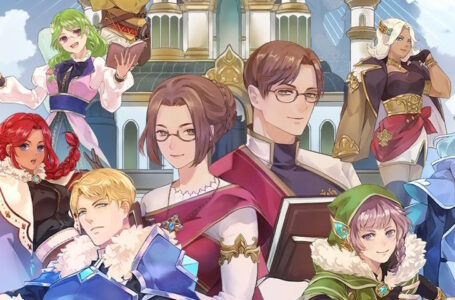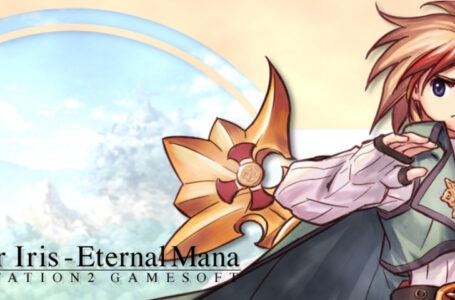Dear Gust, let’s see some new Atelier remasters please
Gust has, over the years, become one of my all-time favourite Japanese developers — not only for the long-running and consistently enjoyable Atelier series, but also for their other work, such as Ar Tonelico, Nights of Azure and Blue Reflection.
Over the years, Gust has been very willing to go back and revisit past titles in order to either modernise them for a later audience, as happened in Atelier Rorona’s case, or simply to put together a “definitive” version of the experience, as seen with the “DX” versions of the Atelier Arland, Dusk and Mysterious trilogies.
This latter aspect dates right back to the earliest Atelier games; Atelier Marie, the first game in the series (which we’re yet to see an official release of in the west), launched on PS1 then was ported to Saturn, Dreamcast (rather notoriously including a virus on some copies) and finally PlayStation 2.
But one era of Atelier where Gust didn’t take this approach, for one reason or another, is the PlayStation 2 age. Ports of older titles aside, this generation played host to seven mainline Atelier games — and yet at the time of writing, most of them (barring a couple of PSP ports) are confined to a single version on a single platform — and two of them (Atelier Judie and Atelier Viorate) haven’t ever been localised. Consequently, as anything retro RPG tends to go, they’ve all become quite pricy these days.
And, as we’ve seen recently, the time is apparently ripe for PlayStation 2 games to get remakes, remasters or reboots — so why shouldn’t Atelier join the fun? Here’s what each of the PS2 games in the series has to offer — and why we’d like to see them put in an appearance on modern platforms.
Atelier Judie: The Alchemist of Gramnad
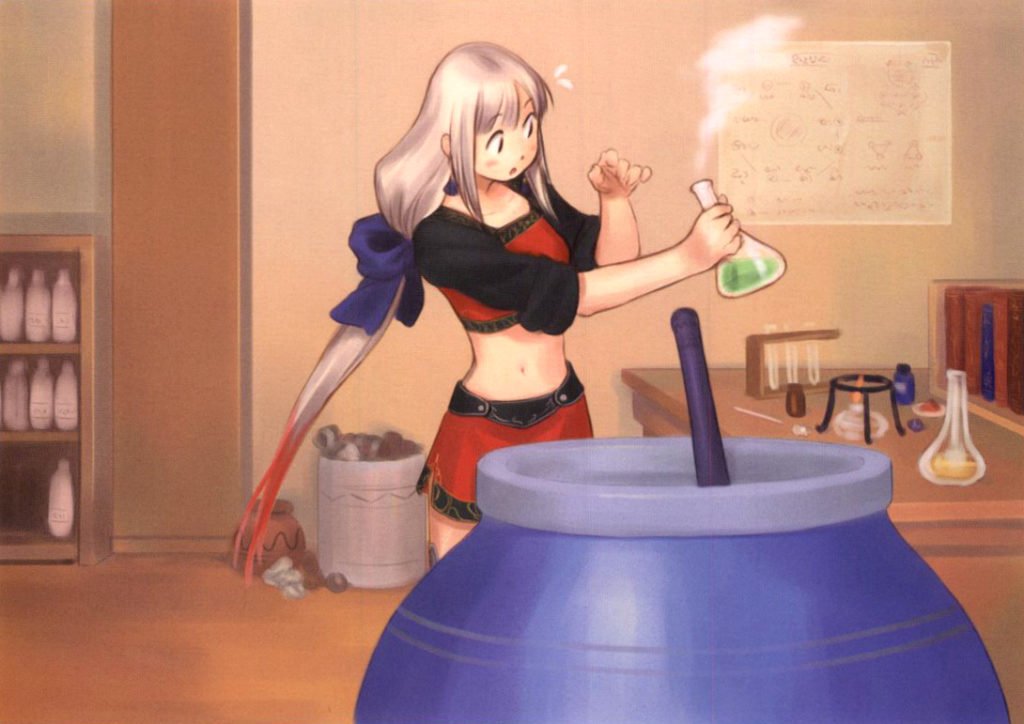
First released in 2002, Atelier Judie kicked off the two-game Gramnad subseries on PlayStation 2. It’s never had an official English language release before, so bringing it west on modern platform such as the Nintendo Switch would make it basically an all-new game for a lot of series enthusiasts.
Atelier Judie marked a period of experimentation for the series. Rather than unfolding mostly in the protagonist’s workshop as in the earlier PlayStation titles, Atelier Judie had a much more adventurous feel to it. Thrown two centuries into the future through an alchemical accident, it’s up to our heroine to figure out how to construct a “Dragon Hourglass” and get back to her own time. Those who have played the “Overtime” sequence in Atelier Rorona Plus and DX will be familiar with the concept, since that whole postgame scenario can be looked upon as something of an homage to Atelier Judie.
Rather than unfolding in a single “hub” town, Atelier Judie sees its protagonist travelling between five different cities and setting up a workshop in each area — for a fee, of course. Each town has its own “gathering area”, and dungeons are freely explorable rather than presented in the abstract like they were in some of the earlier installments. That said, you have to be a bit careful; dungeons can collapse if you set off too many traps or use too many bombs — this abandoned mechanic from the series was frequently referenced throughout the Dusk series, where major characters Ayesha and Keithgriff end up on the run for accidentally destroying too many dungeons.
Atelier Judie lacks a time limit, but still makes use of a time and date system. Different things happen at different times or on different days of the week, items spoil over time and some individual quests have time limits. All of these elements would later be revisited in other Atelier games; the time and weekdays system would be seen again in Atelier Sophie, the Arland series had items that declined in quality if you left them in your basket for too long while out in the field, and most of the titles that lack an overall time limit still feature some time-limited quests.
In other words, Atelier Judie would fit right in with modern Atelier games in terms of mechanics; the only aspect that might date it somewhat is its sprite-based presentation — though it has to be said that Gust made some of the most gorgeous sprite-based games available on the PS2, and I have little doubt they’d look amazing upscaled nicely.
Atelier Viorate: The Alchemist of Gramnad 2
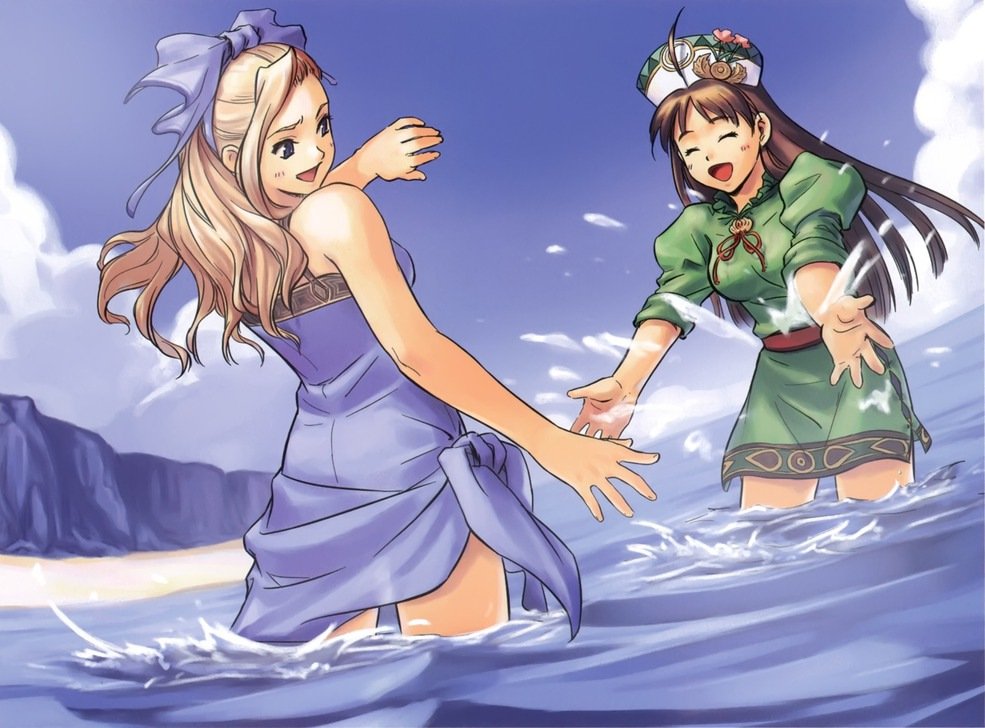
Following 20 years after the conclusion of Atelier Judie — and, interestingly, around a similar time to the three PS1 Salburg games, which unfold in a different part of the same game world — 2003’s Atelier Viorate marked something of a return to the hub-based structure of the earlier Atelier games. Casting players in the role of Viorate, a young girl who refuses to leave her village home when the rest of her family decides to move on, the game challenges you to run a shop and build up the village’s population over the course of three years, followed by a two-year extension if you do well enough.
If this all sounds a bit Atelier Meruru, you’d be absolutely right; there are a lot of elements in common, including exploration in the field, questing, building facilities and pursuing one of the 11 possible endings to the whole thing in the long term. Plus, of course, there’s plenty of opportunity to get to know the characters in Viorate’s home village, fight monsters and synthesise a wide variety of items.
Like Atelier Judie, Atelier Viorate was never localised either on its original release or on the release of the enhanced 2011 PSP port. One suspects that were this ever to come west, Viorate’s somewhat unfortunate name in English would probably end up being “Violet” instead. Whatever she ends up being called, I’d love to see this on a modern console in English!
Atelier Iris: Eternal Mana

Widely renowned by many people as the Atelier game for people who don’t really like traditional Atelier gameplay, Atelier Iris: Eternal Mana is a fantastic PS2 RPG that is extremely fondly regarded by a whole lot of people. It was also the first in the series to come west in an official capacity, so it was likely a lot of longstanding Atelier fans’ first contact with the franchise.
Atelier Iris: Eternal Mana breaks with a lot of series conventions. For starters, you have to play as a filthy boy instead of a pretty girl — though it has to be said, leading lady Lena who joins protagonist Klein early in the narrative ends up being much more important to everything that is going on. Secondly, alchemy is handled markedly differently; Klein learns alchemy recipes by finding examples of items out in special chests in the field, then duplicating them using various types of mana collected from enemies and environmental objects.
There’s still a certain amount of traditional-style Atelier crafting with ingredient items, however; the difference is that this side of things is handled by shopkeepers. And there’s an enjoyable amount of experimentation covered in these sequences — as well as the fact you get rewarded for discovering more items by advancing the shopkeepers’ respective stories, which are all very entertaining in their own right.
Atelier Iris: Eternal Mana has some amazingly memorable characters, an excellent story and some solid mechanics — though it’s clear that there are certain aspects of the game where Gust was more experimenting with what they might be able to do in future installments than truly fleshing them out in this title. The “property reviews” on your items in Atelier Iris: Eternal Mana, for example, are mostly useless for anything rather than flavour text — but they do form the basis for what would become the Traits system in the Arland games.
This is a widely beloved PS2 game just crying out for a rerelease. Perhaps those of us in PAL territories can have it without squished borders this time, too.
Atelier Iris 2: The Azoth of Destiny
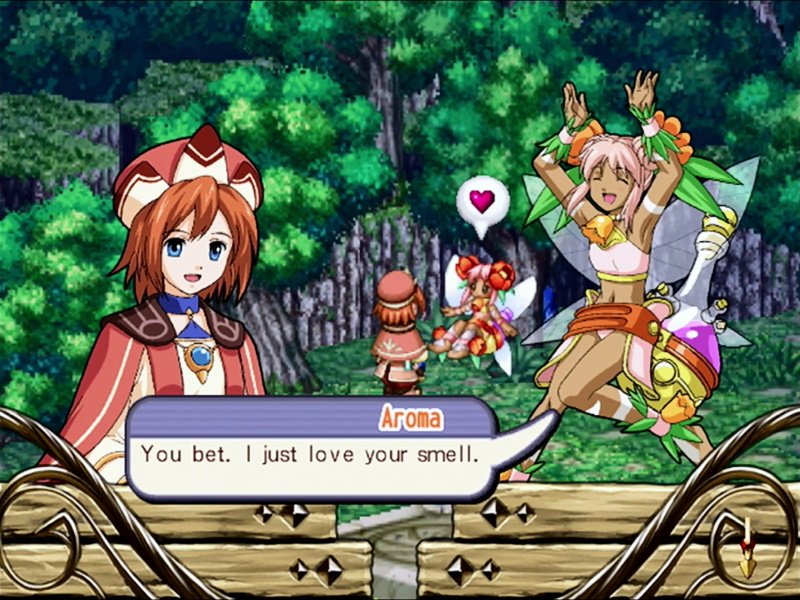
Unfolding many years prior to the events of Atelier Iris: Eternal Mana, Atelier Iris 2: The Azoth of Destiny casts you in the role of two playable protagonists: male protagonist Felt is the one who goes out exploring and advancing most of the plot, while his adoptive sister Viese is the one who does most of the alchemy.
The narrative of Atelier Iris 2: The Azoth of Destiny concerns the balance between the isolated, peaceful floating land of Eden and the chaotic, troubled land on the ground known as Belkhyde. Being an RPG hero who has just pulled a legendary sword (the titular “Azoth”) out of its resting place, Felt naturally wastes no time in jumping through a mysterious portal and investigating what’s going on in Belkhyde when he learns that the balance in the Land of Mana has begun to crumble — and pieces of Eden are disappearing.
Atelier Iris 2: The Azoth of Destiny is a bit of a “best of both worlds” sort of game; Viese’s gameplay is strongly hub-based, non-violent and centres on a combination of talking to people and alchemical crafting, while Felt’s action is much more adventurous, taking him on a long an arduous journey that involved political intrigue, revolution and, of course, a villain called Chaos with the “dark” counterpart to his sword.
Atelier Iris 2: The Azoth of Destiny is noteworthy for its excellent semi real-time combat system, which Gust later revisited in slightly tweaked form in several titles including Blue Reflection and Atelier Lulua: The Scion of Arland. There’s a strong focus on stunning enemies by knocking them back on the timeline, then unleashing huge multi-hit combos to maximise damage and post-battle bonuses. It’s a ton of fun — good job, since Atelier Iris 2: The Azoth of Destiny can be quite combat-heavy!
With a great story, a distinctive art style and some truly wonderful characters, it’d be lovely to see a new version of Atelier Iris 2: The Azoth of Destiny on today’s consoles.
Atelier Iris 3: Grand Phantasm
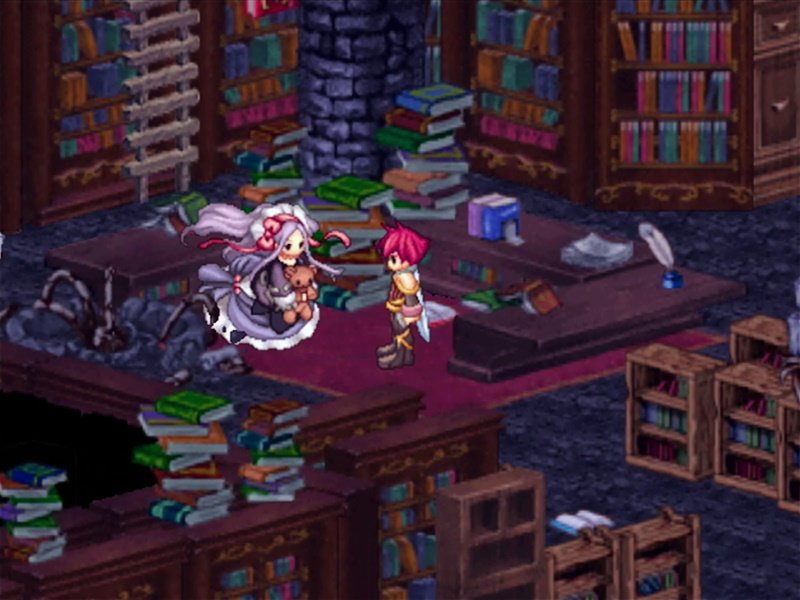
Atelier Iris 3: Grand Phantasm feels very much like an attempt to bridge the gap between traditional hub-based Atelier and the more “JRPG-ish” feel of the previous two Atelier Iris games. Unfolding in a setting that seemingly has absolutely no connection whatsoever to its two predecessors, Atelier Iris 3: Grand Phantasm casts you in the role of adventurer Edge and his friend Iris the alchemist. As residents of the city of Zey Meruze, which appears to be some sort of interdimensional rest stop, it’s their job to check out the various “Alterworlds” and discover the truth behind the mysterious book known as the Escalario.
Atelier Iris 3: Grand Phantasm features an excellent battle system that takes a lot of inspiration from fighting games in terms of aesthetic. Successfully landing hits adds to a “Burst” meter, and filling this up activates a special mode where you can really wail on the enemies. This battle system would be brought back in almost the exact same form in Atelier Shallie: Alchemists of the Dusk Sea — and saw slightly tweaked forms in the two Mana Khemia games.
Atelier Iris 3: Grand Phantasm features a quest and mission-based structure in which you alternate between relatively freeform sections, completing the objectives you choose, and linear narrative-centric chapters. This is a popular game structure for Gust; since Atelier Iris 3: Grand Phantasm, they’ve revisited this style of gameplay in Atelier Shallie and Blue Reflection, to name just a couple of games. The method of coming up with new alchemy recipes by examining specific things in the environment was also returned to in Atelier Sophie.
Atelier Iris 3 is also one of the most gorgeous-looking games Gust has ever put out, with lush 2D backdrops, well animated sprites and gloriously over the top battle effects. It’d look amazing on today’s big screens — so howsabout a rerelease, hmm?
Mana Khemia: Alchemists of Al-Revis
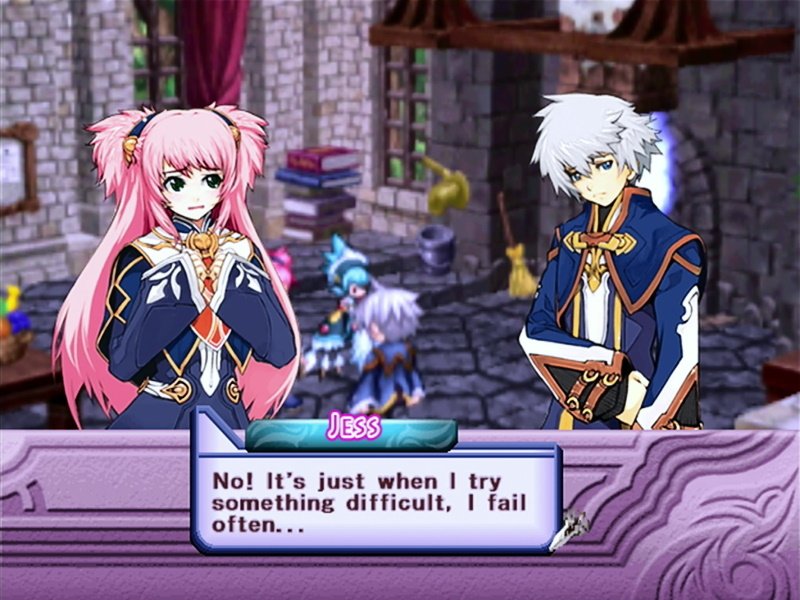
Regarded by some as an unofficial part of the Atelier Iris series — they have a lot of elements in common, after all, despite obviously unfolding in a different world — the two Mana Khemia games are excellent Atelier titles. And yes, they are indeed Atelier titles despite the word “Atelier” not appearing anywhere in their names; internally, they’re referred to as “Project A9” and “Project A10”, with the A standing for… you know.
In Mana Khemia: Alchemists of Al-Revis, you take on the role of Vayne Aurelius, a new student at the titular academy of alchemy. It’s your job to help Vayne survive three rather eventful school years, completing classes and making friends along the way — and perhaps ultimately coming to terms with the truth behind his own existence. Heavy stuff.
Like Atelier Iris 3: Grand Phantasm, Mana Khemia: Alchemists of Al-Revis feels like a game attempting to bridge the gap between “classic Atelier” and what Atelier Iris had to offer. The school setting provides a distinctly hub-based feel to proceedings, but the narrative takes you to a variety of weird and wonderful locations, both for class assignments and advancement of the story. And like Atelier Iris 3, the game alternates between somewhat freeform gameplay and structured narrative components — this time around discretely separated into in-game weeks.
Mana Khemia: Alchemists of Al-Revis is noteworthy in the series for how it ties alchemy into character progression. Rather than gaining levels as in a more conventional RPG, completing battles earns you points which can be used to unlock nodes on a progression board. However, before these nodes can be fully unlocked with points, you need to activate them by crafting the item that they depict. In this way, the “alchemy” and “adventure” aspects of gameplay feel tightly integrated and intertwined with one another — perfect for the series.
We got both the original PS2 version of Mana Khemia and its PSP port in the west, but it’d be lovely to see these get another chance on modern consoles.
Oh, also, this game has Nikki. Nikki is the best. Header image related.
Mana Khemia 2: Fall of Alchemy
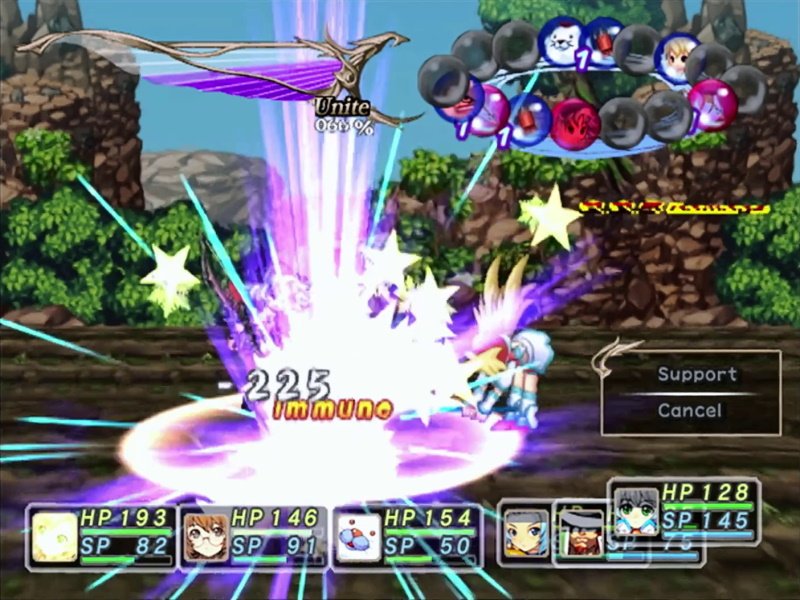
Featuring two playable protagonists, each with their own distinct story to follow — a concept that would be returned to in both Atelier Escha & Logy and Atelier Shallie — Mana Khemia 2: Fall of Alchemy is a fantastic installment in the Atelier series.
Unfolding some years after the first Mana Khemia game, the Al-Revis academy has fallen on hard times, and thus our protagonists find themselves living through a school year that will help determine the future of the establishment as a whole. Playing as either spunky tomboy Ulrika or the sour-faced Raze, you’ll learn about why alchemy in the world appears to be on the decline — and whether or not anything can be done about it.
Mechanically, Mana Khemia 2 mostly expands on what the first Mana Khemia did rather than radically inventing things too much, but the result is a finely polished game full of excellently satisfying mechanics, a compelling narrative that is well worth experiencing with both characters (if only to see the “true” ending that unlocks thereafter) and some of the most memorable characters in the series as a whole. Few will forget their first encounters with Pepperoni and Goto. And indeed most of the subsequent encounters with Pepperoni and Goto.
Mana Khemia 2: Fall of Alchemy is a prime candidate for rerelease, since it never made it to Europe back in the day — though a North American localisation does exist. Maybe a double-pack for modern platforms, allowing us to enjoy the whole Al-Revis saga in one convenient bundle?
Will we ever see these games get a rerelease? Who knows. In the meantime, if you’re feeling flush with cash — and have access to a working PS2 — they’re all well worth your time.
Do you have a favourite Atelier game? Let us know in the comments or via the usual social channels — or pen us a letter for the Rice Digital Friday Letters Page via the widget on the right!
Join The Discussion
Rice Digital Discord
Rice Digital Twitter
Rice Digital Facebook
Or write us a letter for the Rice Digital Friday Letters Page by clicking here!
Disclosure: Some links in this article may be affiliate links, which means we may earn a small commission if you make a purchase after clicking on them. This is at no additional cost to you and helps support Rice Digital!
- Letter from the Editor: passing the torch - June 30, 2023
- Super Woden GP 2 is looking promising - June 30, 2023
- Inti Creates is making a 32 bit-style Love Live action platformer - June 26, 2023




